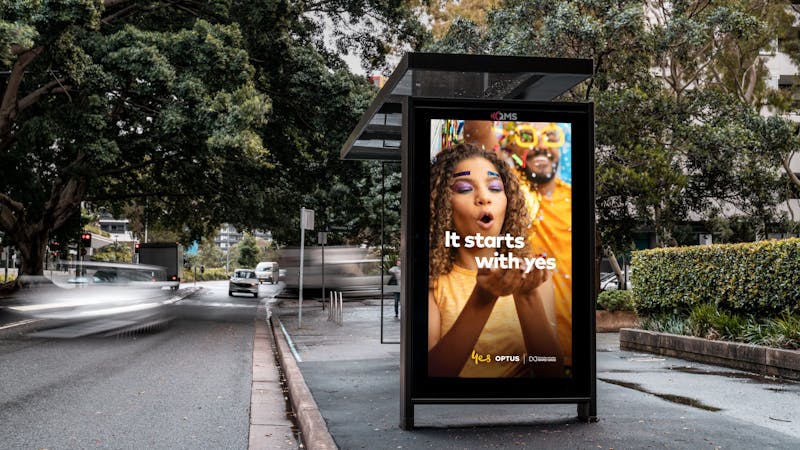Let's be honest: marketing to millennials is largely misunderstood.
And while the term "millennial" is often associated with a younger crowd, keep in mind that the oldest millennial is pushing 40. Feel old yet?
Jokes aside, millennials are a key demographic for marketers given their size and sheer spending power.
Although they're definitely a diverse bunch, understanding what makes them tick doesn't have to be rocket science.
The millennial generation is often described as having unique characteristics and personality traits that set them apart from previous generations. There are two main types of millennials: older millennials who were born in the 1980s and younger millennials who were born in the 1990s. Both groups exhibit common characteristics such as a desire for work-life balance and a preference for experiences over material possessions. However, younger millennials tend to be more tech-savvy and socially conscious, while older millennials may have more traditional values and priorities. Despite these differences, both types of millennials share demographic personas that reflect their status as young adults navigating the challenges of the modern world. Baby boomers, who came before the millennial generation, may struggle to understand millennial behaviors and attitudes, but these traits are a natural reflection of the unique cultural and economic circumstances that shape the millennial experience. The millennial buyer persona is a crucial target for businesses today, as they are one of the largest consumer groups in the world. With over a million millennials in the United States alone, they are known for their unique shopping behaviors, preferences, and values. They are tech-savvy, socially conscious, and prioritize experiences over material possessions. They are also known for their brand loyalty, seeking out companies that align with their values and ethics. As a result, businesses must understand the millennial buyer persona to tailor their marketing strategies and meet their expectations in today's market.
In this guide, we'll highlight everything you need to know about the millennial buyer persona.
How Old Are Millennials?
Millennials represent consumers born between the early/mid-1980s and the mid-1990s (think: people between the ages of 22 and 39).
When in doubt, think of them as the kids who came to age during the Internet boom. They're tech-savvy, but they weren't born with smartphones in their hands (that's Gen Z, by the way- they’re the ones TikTok-ing).
Demographic Summary
Here is a quick summary of the unique demographic traits:
- Massive, incredibly diverse group of consumers.
- United States' largest generation
- Entering prime spending years and largest wealth accumulation phase.
- Fiercely loyal with a high lifetime value.
- 60% of their shopping online.
- Money-conscious, having lived through the Great Recession

Buying Behavior Characteristics
Like many companies, you may be scratching your head wondering what advertising resonates with millennials.
Given that they represent such a diverse demographic, it's important not to over simplify or generalize their wants and expectations.
That said, marketers should keep the following buying behavior characteristics in mind:
Distrust Traditional Advertising
This is the big one. It’s no secret that millennials avoid old-school ad formats and are skeptical of advertising in general.
Pop-up ads, cold calling, and anything that feels too much like a traditional commercial isn't going to resonate as well with this crowd.
Rather than disrupt and shove marketing messages in their faces, marketers are tasked with reaching these consumers organically or through ads that are presented as something "real."
Case-in-point, the majority of millennials are open to ads that feature influencers and digital stars that they know and trust.
Playful, personal ads like this one from Chubbies highlight how marketing to them on their terms is possible.
Totally Glued to Social Media
No surprises here. Considering that over 90% of millennials are active on social media, it's a no-brainer for marketers to take to platforms like Facebook and Instagram rather than focus solely on email or PPC.
Simply put, marketing to them means building relationships and publishing share-worthy content such as bite-sized social media video.

Interested in Experiences and Authenticity
Millennials love to share their latest purchases and likewise rely on friends and family to keep them in the loop on product recommendations.
That's why so many brands targeting millennials focus on authenticity and customer stories.
Advertising via actual customers helps remove the sense of any sales pitch, as highlighted by this video ad from Smile Direct Club. Their #whatmakesmesmile campaign goes hand in hand with our comments above about advertising via social media.
Committed to Beliefs and Values
According to research by Sprout Social, millennials are the demographic most interested in values when it comes to the brands to support.
In other words, companies marketing to them shouldn't shy away from social issues including sustainability and diversity.
Although addressing potential controversial topics is tricky for brands, younger buyers today expect companies to take a stand on social issues important to them.
Patagonia is a brand who has historically pushed their values to the forefront of their business, and built a lot of brand advocacy because of it.

Strong Sense of Humor
The millennial fascination with comedy is well-documented. From memes to absurd humor via TV sensations such as Rick and Morty, brands are expected to crack jokes from time to time.
Humor is yet another tactic that helps modern companies make their ads seem like sales-y.
For example, this self-aware video ad from Liquid Death, talking about a new ice tea product.
All About Animation
Millennials have the distinction of watching the most online videos versus any other demographic. Meanwhile, their dedication to nostalgia and cartoons makes them the perfect audience for animated content.
The beauty of using animation is that it can both entertain and inform audiences on products.
For example, this video ad from Mint uses animation to tackle both daunting and touchy subject of debt. Through animation, companies run less of a risk of setting off the alarm in their customers' heads that says "Oh, this is an ad."
Video Marketing Examples from Brands Millennials Love
Let’s break down a few real-world examples of video advertising similar to Mint that really resonate. Note that these are based on a recent list of brands millennials love the most.
Playstation
This ad's combination of animation, music, and frequent cuts is exactly the mix of marketing and entertainment that they respond to. Playstation likewise scores bonus points for featuring a variety of beloved video game characters for that ever-so-important nostalgia factor.
Target
Here Target is able to highlight both personal stories and the fact that their company values inclusiveness. Authentic, personal stories speak to younger customers seeking a reason why your brand is worth supporting beyond its products.
Amazon
When you're a corporate giant like Amazon, attracting millennials can be an uphill battle. That said, this ad is effective as it centers around the individuals behind Amazon rather than the company itself. The inclusion of behind-the-scenes footage and personal photos is a nice touch, too.
Disney
Despite having a seemingly endless marketing budget, this ad from Disney feels like something from a smartphone reel. These types of simple ads are surprisingly effective as they manage to showcase an experience first and foremost.
Buyer Persona Takeaways
In short, there's much more to millennials than avocado toast.
Reaching this generation means understanding their core characteristics:
- Ages 22 - 39
- Large, diverse population
- Tech Savvy: 60% of shopping is online
- Money-conscious
- Distrust traditional advertising
- Active on social media
- Interested in experiences
- Committed to beliefs and values
- Strong sense of humor
- Animation video
You found this article looking for demographic information about the Millennial buyer persona and in the process learned what characteristics are driving their buying decisions.
Older vs Younger Millennials
Understanding the difference between older and younger millennials is crucial for creating effective buyer personas and crafting targeted marketing strategies. Millennials, often described as those born between 1981 and 1996, are a diverse group with varying preferences and behaviors. Older millennials might be more settled in their careers and family lives, while younger millennials may still be navigating early career stages or higher education. A buyer persona canvas can help outline these distinct characteristics, providing a detailed description of a millennial customer's motivations, challenges, and needs. User persona and buyer persona templates are valuable tools in this process, allowing marketers to identify and empathize with their existing customers. Understanding these personas contributes to the creation of a successful customer journey map - a visual representation of a customer's interaction with a brand. This customer journey explains the steps taken by customers, from initial brand awareness to the final purchase decision, helping businesses to optimize each touchpoint and enhance the overall customer experience.
To Recap:
Millennials, one of the largest generational cohorts in history, consist of approximately 83 million individuals born between 1981 and 1996. As a demographic cohort, members of this generation have been shaped by a variety of political, economic, and social factors, including the rise of technology and globalization. In addition, millennials in the United States are known for being ethnically diverse, with a significant portion of the generation identifying as non-white. According to the Pew Research Center, millennials currently have the highest levels of education and disposable income compared to older generations. Despite this, they face unique challenges, such as the burden of student debt and a difficult job market. Despite these challenges, millennials continue to make significant contributions to society and shape the world in new and innovative ways.
We saw how video marketing speaks to a Millennials strong sense of humor and love of animation - without being dismissed as “salesy.”
Continue reading this article by Colormatics to discover 6 tactics that attract and engage Millennials.


